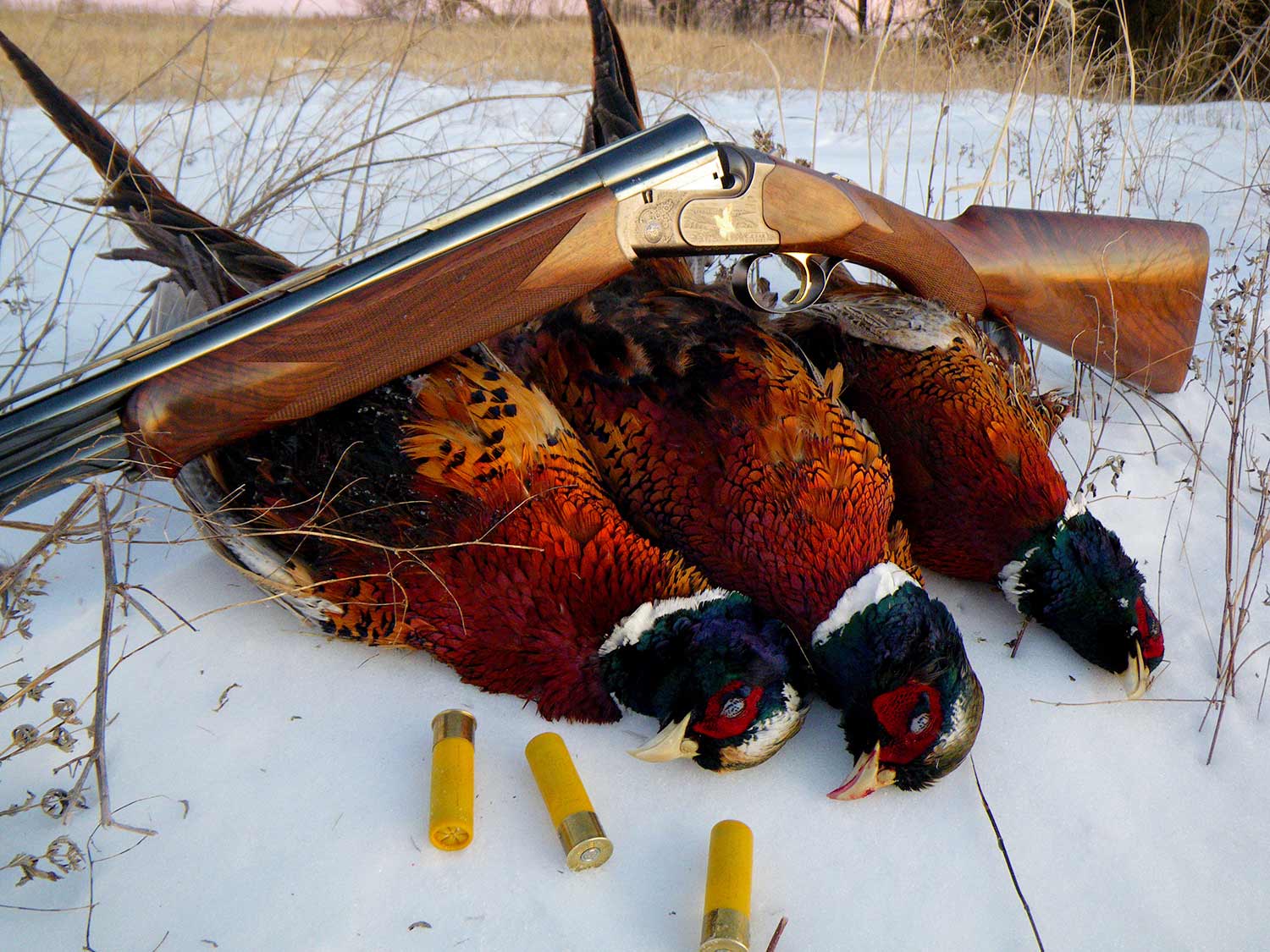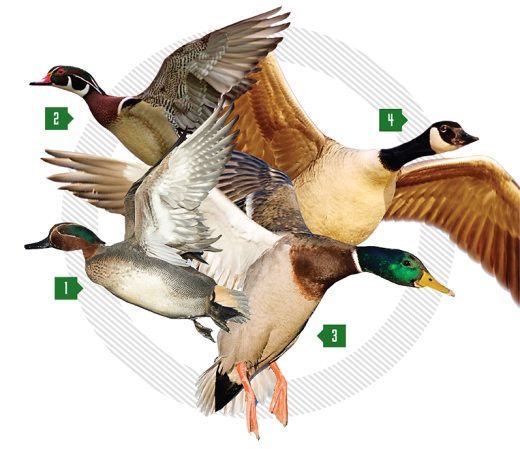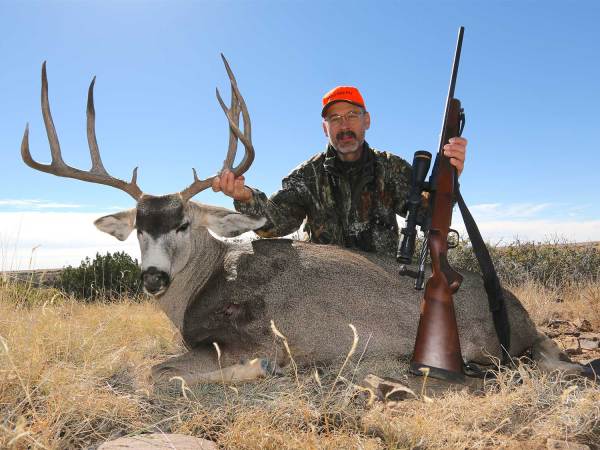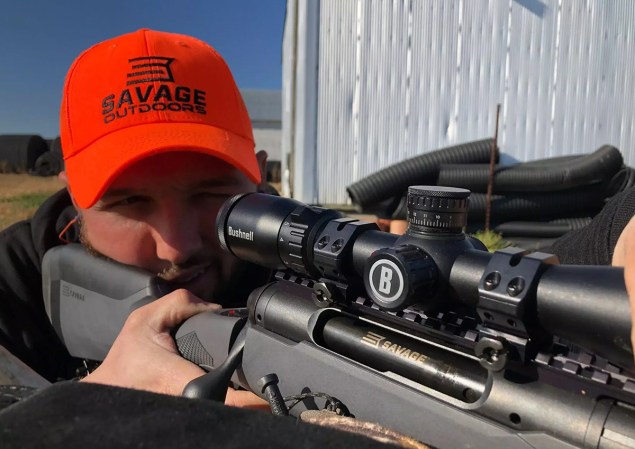We may earn revenue from the products available on this page and participate in affiliate programs. Learn More ›
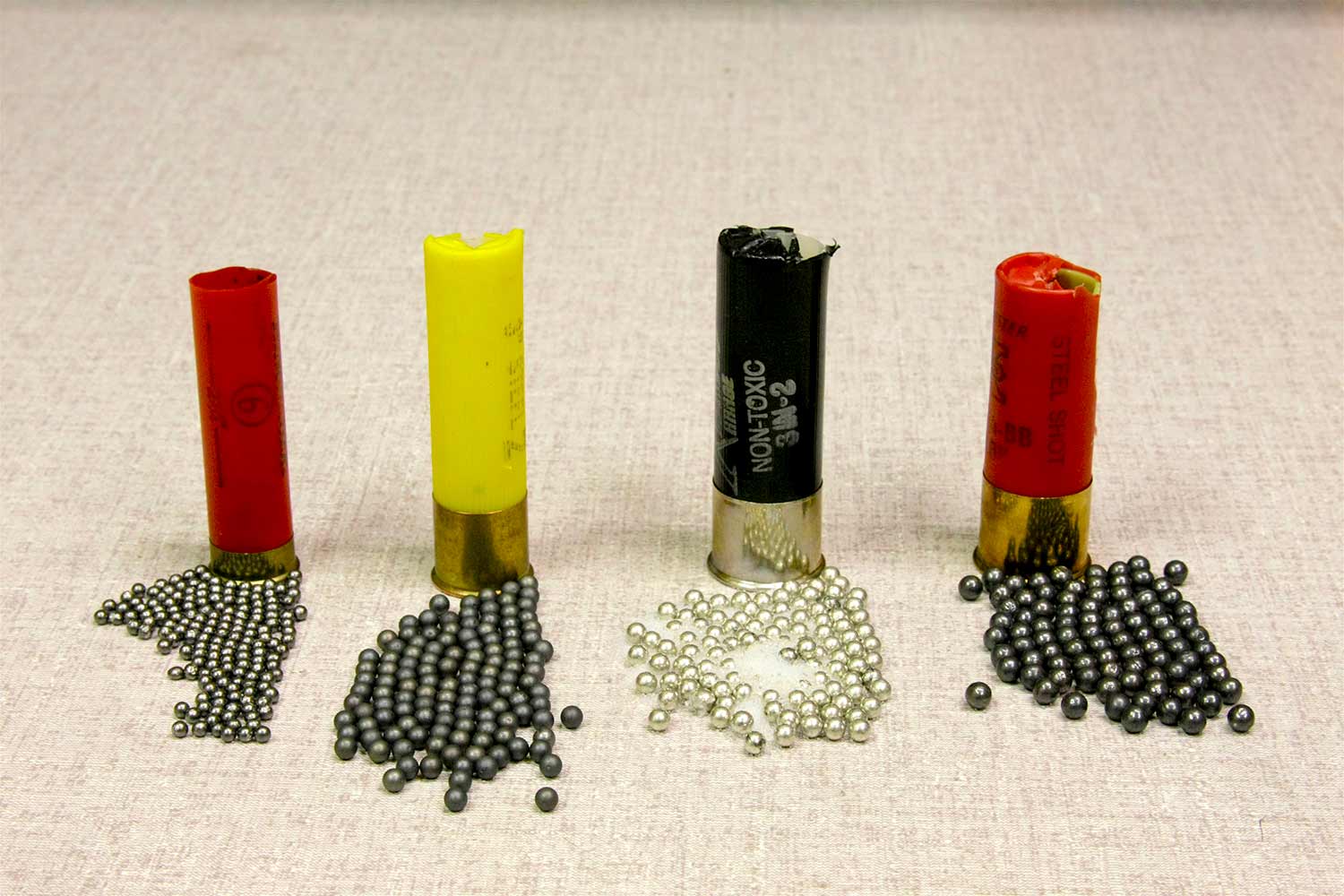
The 12-gauge shotgun is the most versatile, effective one-gun solution for all hunting — but that doesn’t mean it’s ideal for all shotgunning. Sometimes a 20 gauge and even a little 28 gauge can be the better tool. Let’s see if we can figure out why.
How Shotguns Perform
First, a few basics. Unlike rifles, shotguns do not generally use rifled barrels. You can put a rifled barrel on them and shoot single projectiles, called slugs, but in this article we want to investigate shotguns for hunting flying birds. That means throwing shot, a bunch of small pellets. And that requires a special shot shell.
Fundamentally, a shotshell consists of a hull with a primer in the bottom. You pour powder atop the primer, push a plastic wad over it to keep the powder isolated from what comes next — the shot. The plastic “over-powder” wad these days includes a shot cup which holds most of the pellets and protects them from scraping the steel barrel walls on their trip out. Seal the end of this shell by folding it over and there’s your ammo.
When you fire a shotshell the firing pin strikes the primer and detonates it. It shoots a small flame into the main powder charge. This oxidizes (burns) and expands so much and so quickly that it shoves the payload of shot out the barrel, usually at around 1,200 feet per second (fps) to as fast as 1,700 fps.
Now, because these pellets are in clusters and round rather than conical, they cannot be spun like rifle bullets for precise targeting. Instead the swarm of them exits in a stack as wide as the barrel diameter. But it doesn’t stay that way. Immediately each pellet starts veering off on a path of its own due to variable surface blemishes on the round pellet. A flat spot here or there starts wind planing and the tight swarm spreads out in an ever growing cone shape. This is a good thing because it covers a wider area downrange, which makes hitting flying targets much easier. But there’s a limit.
The limit is pellet density. As the swarm continues to spread, gaps between the pellets grow so wide that they can completely miss various birds. A small bird like a quail doesn’t need much of a gap to slip through unscathed. A giant Canada goose needs more. There are several ways to minimize these gaps, the most obvious being to throw more pellets in the first place. This is the advantage of the 12 gauge over the smaller 20 and 28 gauges. But it comes at a price. Recoil.

The heavier the shot charge, the more powder needed to drive it fast enough. This really increases recoil. If you want a kick in the chops, fire a few 3.5-inch, 12 gauge shells filled with 1 3/8-ounces of tungsten shot. In an 8-pound gun that’ll slap you with about 46 foot-pounds (ft-lbs)of recoil energy with the gun coming back at your shoulder at nearly 20 fps. That compares to about 22 ft-lbs recoil at 13 fps from a typical 1 1/8-ounce 12 ga. load.
An alternative way to add more shot is to load pellets of a smaller diameter. An ounce of #2 pellets (quite large) should harbor about 87 individual balls. An ounce of #6 pellets (quite a bit smaller) should contain 225 pellets. So why not always shoot the smaller pellets to keep patterns more dense? Because small pellets run out of energy sooner than large pellets. While a #2 pellet at 60 yards might have sufficient punch to break a goose wing and penetrate to its heart, a #6 pellet might not get through the padding of feathers.
A method for tightening patterns without adding more shot is to “choke” the gun’s muzzle. This means constricting the bore near the muzzle. This works something like tightening the nozzle on a garden hose. It makes the pellets stay in a tighter group farther downrange before eventually spreading too wide. All shotguns in all gauges have chokes, most of them removable and interchangeable so that you can customize to a degree pattern density and effective range for different conditions. While an improved cylinder choke might create the perfect pattern density for 25-yard shots, a modified might extend this to 30 yards, a full to 40 yards.

A third way to tighten patterns is to harden the shot, make it more perfectly round, and keep it round. That’s what premium ammunition is all about. Special wads, fillers/buffers, and shot (hardened lead, copper-coated lead, steel, bismuth, tungsten alloy) combine to tighten patterns to varying degrees.
But better chokes and shells can be built in any gauge, 20 and 28 as well as 12. The advantage the 12 always has is more room in that big, .729-inch diameter bore to pass more shot more efficiently. You just can’t beat it with a smaller gauge. But you may not have to.
Scaling Gun to Game
You don’t have to shoot 1 3/8-ounce loads at quail, grouse, pheasants, or even most ducks and geese. You don’t even need 1 1/4-ounce or 1 1/8 ounce or even 1-ounce. You just have to throw enough shot so that you maintain a cluster of pellets close enough together to strike the species you’re hunting with two or more pellets at the range at which you strike it. Twenty yards? Thirty? Forty? Fifty? There’s no hard and fast rule on how many pellets of a given size are required to kill various birds. Depends on if you hit the head or butt. But as a general rule, getting three to eight on target does the trick. And sometimes you can do that more effectively with a 20 gauge or 28 gauge.
How can this be possible? I mean, if a 1 ¼-ounce load of #6 shot in a 12-gauge shell is throwing 279 pellets, how can a 1-ounce 20 gauge load of #6s (225 pellets,) let alone a 28 gauge 3/4-ounce load (169 pellets) be as effective? And the answer is… patterning, gun handling, and flinching. Let’s examine each of those in each of our three gauges.

12 Gauge
The 12 gauge has a nominal bore diameter of .729 inches. Standard shell length is 2 3/4 inches, but many barrels are chambered to also handle 3-inch shells and some even 3 1/2-inch. The longer shells simply have more room for more shot and powder. This doesn’t always work.
Cramming more shot into a given diameter tube results in taller stacks of shot. This shot column decreases in efficiency as its length increases. Why? Because the shot at the bottom of the long stack gets crushed by the mass of pellets above it during recoil. In addition, there can be so many pellets that they don’t all quite fit inside the protective shot cup. They rub against the barrel wall and get scraped flat, so they fly out of the pattern. It is entirely possible that a 1 1/8-ounce payload could put more pellets on a duck at 40 yards than a 1 1/2-ounce payload of the same sized pellets. Even excessive speed can disrupt a shot column and blow patterns.
Another trait of long shot columns is stringing. The spheres at the front of the pack are less likely to get deformed, so they remain more aerodynamically efficient. They fly straight and reach the target quickly. Meanwhile, that bunch in the back gets squashed to varying degrees and lags behind. Many diverge so radically from the original flight path that they’re out of the killing zone inside of 10 yards. And while the first pellets reach the target, the Johnny-come-latelies might be five or ten yards behind. By the time they catch up the target has already flown away.
Read Next: 8 Upland Bird Hunting Shotguns That Won’t Break the Bank
It’s been said that the closer a stack of pellets is to being “square,” the more efficiently it patterns. Square in a round tube means no taller than it is wide. I don’t know exactly what weight of pellets equals this in a 12 gauge, but I do know that skeet shooters routinely use 1 1/8-ounce loads and many quail hunters like 1-ounce loads. Both pattern evenly, and that’s what improves the hunter’s hits. A 1-ounce load of #7 1/2 lead shot — the small size just about perfect for quail, partridge, and ruffed grouse — harbors about 394 pellets. Sounds like more than enough to hit a bird, no?
The other advantage in light loads is reduced recoil. Recoil on the shooter’s shoulder has nothing to do with pattern density and consistency, but it can have a lot to do with where the center of that pattern is thrown. If you inadvertently flinch or lift your head from the stock in anticipation of recoil, you don’t shoot well. A heavier gun minimizes felt recoil, but is harder to lug afield all day and slower to whip into action when a fast flying quail burst in and out of your life. Really, while the 12 gauge is inarguably versatile, you really need at least two guns in varying weights to maximize 12 gauge potential. An 8-pound gun is a decent compromise, but a 9- to 10-pounder would be better for magnum waterfowl loads and a 6-pounder ideal for quick shooting at upland birds with 1- to 1 1/8-ounce shot.
So, while the 12 may indeed be the do-all gauge, it isn’t necessarily the do-all gun. If you hunt more upland birds than waterfowl, you might do better with a smaller gauge.

20 Gauge
If you melted a pound of lead into balls that just fit the width of a 20-gauge bore, you’d get 20 of them. Bore diameter is .615-inch. A standard 20-gauge shell is 2 3/4-inches long and typically holds 1-ounce of shot but can be loaded with 7/8-ounce or 1 1/8-ounce. Some guns are chambered for 3-inch shells capable of holding up to 1 1/4-ounces of lead shot.
All of the issues about shot stacking, deformation, and stringing in the 12 gauge apply to the 20 gauge in proportion to its size. The main difference between it and the 12 gauge are gun size and weight, and pellet count. Given equal patterning efficiency, the higher pellet count in a 12 gauge should keep a denser pattern at longer ranges. But a trim, light 20 gauge might get you on target faster and more precisely.

Many hunters find the 20 gauge a fine alternative to the 12 for smaller framed shooters who target upland birds more than waterfowl. But the 20 can be quite effective on ducks and geese, though certainly no match for the 12. It just doesn’t have the volume needed, especially for large doses of large shot. Bigger pellets like the #2s and BBs used for large ducks and geese just don’t flow that efficiently down a 20-gauge bore. It’s like trying to get the front line of a football team abreast through a garage door vs. the same number of cheerleaders. If you mainly hunt waterfowl, the 12 should be your first choice. If upland birds are your main meal, the 20 might bring you more success due to its smaller size and faster handling. But that depends in significant measure to the gun itself. 12 gauge guns can be built surprisingly trim and lively and 20s can be built heavy and clunky. But if you’re looking for the ultimate trim and lively upland gun, keep reading…

28 Gauge
With this diminutive bore we could melt 28 .545-inch diameter balls from a pound of lead. Essentially we are spitting our loads of pellets down a bore just a half-inch in diameter as opposed to the 12 gauge’s nearly 3/4-inch bore. Obviously our 28 is going to be less efficient. Nonetheless, with fine bird shot from #6 to #8, the 28 gauge is a surprisingly effective bird killer. I personally have seen my success on everything from quail to pheasants improve when using a 28 gauge and 3/4-ounce loads of 7 1/2 shot. Many friends have observed the same in their own shooting.
How can this be? It’s certainly not because the typical 28-gauge payload of 3/4-ounce includes huge handfuls of shot. Just 225 #6 pellets. Yet when flung toward everything from bobwhites to ringnecks, the 28 gauge seems to bring home the bacon. The old line about the 28 gauge having a square load is hooey. It’s too tall, even at 3/4 ounce. You can find a few 9/16-ounce loads, but that’s not squaring anything.

No, I think the 28’s performance is due almost exclusively to low recoil and small, light, quick handling guns that let shooters forget about everything but the target. When even your subconscious is sleeping through any dreams about recoil, you are free to focus, focus, focus on that bird. And that is, was, and always will be the key to hitting flying with a scattergun.
But forget about versatility with the 28. Shell volume is much too small to use steel shot effectively. Steel is so much lighter than lead that you must go up at least one or two pellet sizes to get roughly the same energy downrange as lead pellets can. To match the punch of a #6 lead pellet with steel you need at least #4 if not #3. If you could cram 3/4-ounces of #3 shot inside a 28-gauge shell you’d top out with 118 of them. That’s a far cry from the 197 you get in a 1 1/4-ounce 12 gauge load.
Really, about the only non-toxic shells you’ll find in 28 gauge are expensive Bismuth and Hevi-Shot tungsten. I’ve taken decoying ducks and geese with 28 Bismuth and it was a hoot, but you have to be ready to pay the price. At this writing Bismuth 28s are going for about $1.35 per shot. Hevi-Shot is $3.60 per pop.
Even light quail and grouse loads in 28 are more expensive than 20s and 12s due to volume production and sales. Run a 28 gauge and you’ll be specializing, but oh what a fun, effective specialization it is. I’ll confess I was shocked at how well a 28 kills not just quail and grouse, but pheasants, too, when I first risked trying one. I routinely crumpled wild, free-range Dakota ringnecks at 30, 35, even 45 yards. Maybe I’m concentrating so well that I’m hitting them all in the head. Regardless, the 28’s been working for me since 1996, so I’m not quitting now.
Read Next: 5 Do-It-All Semi-Auto Shotguns That Won’t Quit
How Hard is Hitting Hard?
One misconception many shooters have is that a 12 gauge “hits harder” than a 20 or 28. Well, that’s true—kind of. You must remember that all of these can be launched at roughly the same velocity. Shoot the same weight and diameter pellet in any gauge at the same muzzle velocity and each pellet will carry exactly the same energy. In short, a load of #6 lead from a 12 gauge at 1,300 fps hits no harder than a #6 lead from a 28 gauge at 1,300 fps. Of course, if you put more of those #6 on target, the cumulative impact would be greater. That is how the 12 gauge could hit harder, but this requires effective patterning. It’s possible (not likely, but possible) for a given 20-gauge load to put more pellets into a pheasant than a given 12 gauge load. Dense patterns are the holy grail of shotgun performance, not heavy loads of shot.

And The Winner Is…
The final answer to all this is that, yes, the 12 gauge offers the ultimate versatility in shotgun performance. But you might actually bag more birds with a lighter, faster, easier handling 20 or 28 gauge simply because you shoot it better. If you’re looking for a one-gun shotgun solution, consider a 12 gauge of about 8 pounds with interchangeable chokes. If you strictly want an upland 12, try getting one closer to 6.5 or even 6 pounds.
If you mainly hunt upland birds and decoying ducks and a few close geese now and then, a 20 gauge with a 3-inch chamber might prove ideal. Again, 6 pounds is about ideal for quick action, but 7 pounds would favor your cheek and shoulder when shooting heavy 3-inch loads.
Finally, if you focus on upland birds, do give that silly little 28 gauge a hard, hard look. On paper it just doesn’t measure up, but in the field, oh my. This little gun could turn you into a quail’s worst first date.
